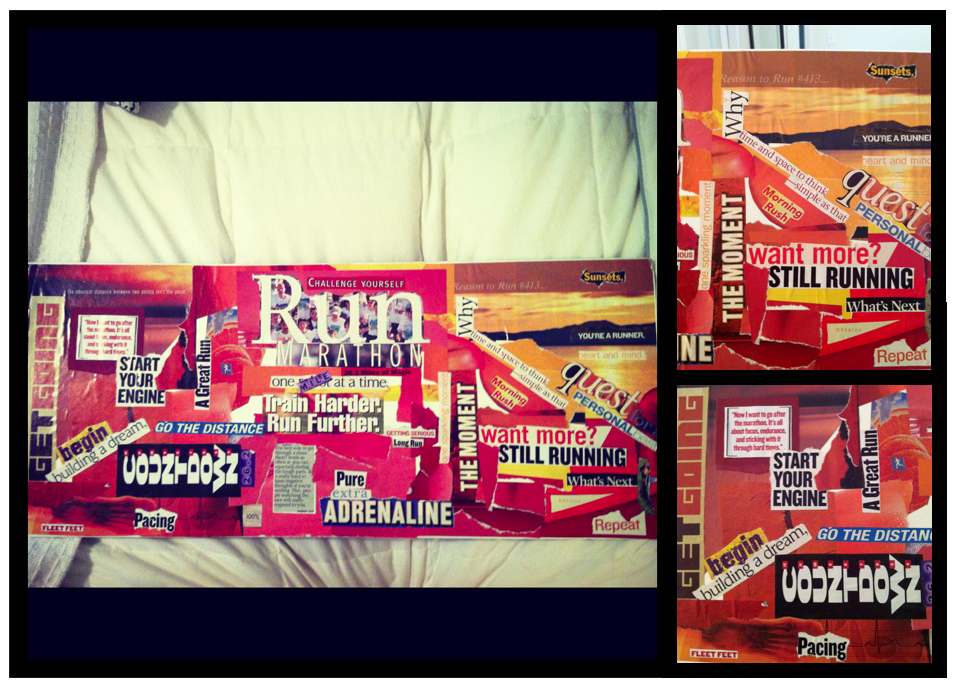Becoming a Better Runner
I originally wrote this post in September of 2012 when I was pregnant with my second child. It's fun to look back on this post and see how far I've come. I am a better runner than I was five years ago because of this advice. Even though this post is older the advice is solid and has been the cornerstone to my improvements as a runner since 2012. There are few things that have been part of my training over the past year [2012] that I believe have made me a better runner. I saw marked improvement in my running in 2011: I PR'd in every distance 5K to 10K. The things I added to my training aren't especially innovative, but I think they are key elements necessary to making improvements.
[Tweet "Tips to become a better #runner "]
Hills:
When I first decided to get back into "marathon" shape in the fall of 2010, after running casually for about a year, I started with hill repeats. The hill that I ran my repeats on was a total elevation climb of 113 feet over a little more than a quarter of a mile. I'd run 2.5 miles to get to the hill, run repeats and then turn around and run home. I started with 2 repeats and increased until I was running six hill repeats once a week. I noticed an immediate improvement in my fitness (within a week of starting to run the repeats) and then later in my speed. I also didn't shy away from hilly runs, which was easy considering we live in a very hilly area. There are so many runners who avoid hills, but running hills will only make you a better runner. I've developed the mantra: "Embrace the hill." So instead of dreading hills I feel strong on the hills; you could even say I'm a "hill snob." I try not to shy away from hilly runs or hilly races; my half-marathon and marathon PR's are on hilly courses. If you "embrace the hill" then you will see improvements in your running, you'll become a stronger runner and a faster runner if you tackle them head on.
How to Do It: Hill repeats are best run on a hill that climbs 100-200 feet in elevation. Make sure you warm up with ten or more minutes of running before running the repeats. Break the hill into thirds: run the first third faster than you easy pace, but slower than any race pace. Pick up the pace in the middle of the hill and then charge to the top in the last third of the hill. Recover jog on the way back down to the bottom. Repeat. Start with 2-3 repeats and add one additional repeat each week. Complete a cool down jog of at least 10 minutes after the repeats.
Track Workouts:
In college I had access to a track and ran speed intervals in prep for my first marathon. But between 2003 and 2009 the only speed intervals I ran were on the road or the treadmill. Although a track isn't necessary for speed work, I think there is a mental edge to running intervals on a track. I started running intervals on the track last spring. I loved arriving at the track with the feeling that I was there to do business: to work hard and put everything I have into the workout. I noticed marked improvement in my running, easy runs felt easier, races were faster. When you push yourself to go hard, you will get faster.
How to Do it: If you've never run track distances before, familiarize yourself with track distances and the markings on the track and with the proper paces for your training. The McMillan Pace calculator can help you determine proper pacing for speed workouts. Find a local high school or college track. Usually a good track workout will total 2.5 to 3 miles [or more!] of interval work (including recovery but not including the warm up or cool down). Plan your workout before you get to the track so that you're ready to go when you get there. Here's an example of a typical track workout: 1-2 mile warm up on the road or track; 400m x 8 with 2oom jog recovery between each 400m; cool down with 1-2 miles. Or you could preform a ladder workout where you would run 1000m, 800m, 600m, 400m, 200m, 200m, 400m, 600m, 800m, 1000m with 200m jog recovery between each interval. If you can run track workouts with others, do so. The friendly competition will help you push yourself. You can find countless speed work suggestions at places like Runners World or in books like Hal Higdon's Run Fast.
Running with Others:
Prior to last year I only ran alone. I'd never trained with anyone. I shied away from running with others partly because I was shy and partly because I was so uncertain that I would find people who ran at my pace. I was really worried about being a straggler and feeling like I wasn't good enough. But I started running with my sister-in-law in the winter of 2010 and running with her convinced me that I could get better running with someone else. Our pace was match perfectly and we started training together. I also joined a running club and found that there were runners of all abilities, and that I was one of the "faster" runners, which really boosted my confidence. Running with someone is so beneficial because you can give and recieve feedback and encouragement in real time. There were many times when my sister, Danielle and I were training or racing together when we would keep eachother in check "This pace is good," or encourage each other when it was tough "You can do it!" That type of support is so amazing and can really bring out the best in you.
How to Do It: Find a local running club. Don't be intimidated by the running club, chances are there are running enthusiasts of ALL abilities and paces and you'll find someone you can connect with. And even if everyone is faster than you, don't be ashamed. You will improve if you're surrounded by faster people.
Higher Weekly Mileage:
To run better you have to run more. There's really no way around it. I found that when I increased my mileage beyond 35 miles I noticed that my overall fitness improved. The more mileage you run the more your body adapts and the easier it becomes. But there is a catch to adding miles, a BIG catch: you have to do it gradually or you'll get hurt. You're body has to adjust to the training load, if you don't allow for adequate adjustment (time) then you're parts of your body: ligaments, tendons, fascia, muscles, even bones will be unable to carry the load and start to break down, resulting in injury. I've experienced this in the form of plantar fasciitis during my first marathon in 2003: a painful inflammation of the plantar fascia in the bottom of the foot. If you don't take it easy, your body will force you too. But if you can safely add mileage, your running will benefit.
How to Do It: Many runners follow the 10% rule when it comes to increasing weekly mileage, that is don't increase weekly mileage by more than 10% each week. So if you're currently running 20 miles over the course of a week, try running 22 miles next week. It's also a good rule of thumb to take ease up every fourth week of your training to say 75-80% of what you have been running. So if you're running 45 miles a week, run a "rest week" of 33-36 miles. You won't loose fitness, instead you're body will have a chance to recover and recovery is key to making fitness improvements (and for staying healthy). Listen to your body as well. If you run 45 miles and are feeling serious aches and pains (but no injury) at 45 miles, scale back for a week see if the aches and pains go away. Don't ignore tightness as it can be the precursors to injuries that could sideline you. Another way to safely increase training load is to periodize your training over the course of a year. Pick several big races and schedule your training and rest periods around those races. If you don't rest between periods of intense training, you'll pay the price with injury.
[Tweet "Want to become a better runner? Start dreaming big! #dreambig"]
Set Big Goals:
I think one of the best ways to improve as a runner is to set BIG GOALS. Don't limit yourself by past performances: "I could never beat that time again," or pigeon-hole yourself into being a certain kind of runner: "I only run 5K's." Stretch yourself to believe that you can do in the future what you now feel is impossible. My goal is to run a 3:30 marathon this coming spring. That's a big goal considering I've never run a marathon in the 3:30's (my fastest time is 3:48) and I'll be coming back after having a baby. But with hard work: hills and track workouts and pre-dawn runs, There are indicators from last years training that show that I'm capable of it and I'm confident I can reach that goal. [I actually exceeded my goal running 3:25 in the spring of 2014].
How to Do It: Think BIG. Write it down. Share it. Post it in prominent places around your house. Make a dream collage as a visual reminder of your goal. Mentally rehearse what it will take to reach your goal: imagine yourself getting up at 5am, donning a headlamp and running through the snow for 6 miles. Schedule time to train and don't make excuses. Find someone else to share it with, someone who can dream big with you and encourage you along the way.
What has made you a better runner? What suggestions would you give to someone who wanted to improve their running either to run faster or longer distances?
--Sarah
Want to check out my training and daily musings? Follow me on Instagram.
Or connect with me here, I love getting emails from readers!
Email: RunFarGirl [at] gmail [dot] com
Twitter:@RunFarGirl
Facebook:Facebook.com/runfargirl262
Pinterest: pinterest.com/runfargirl



